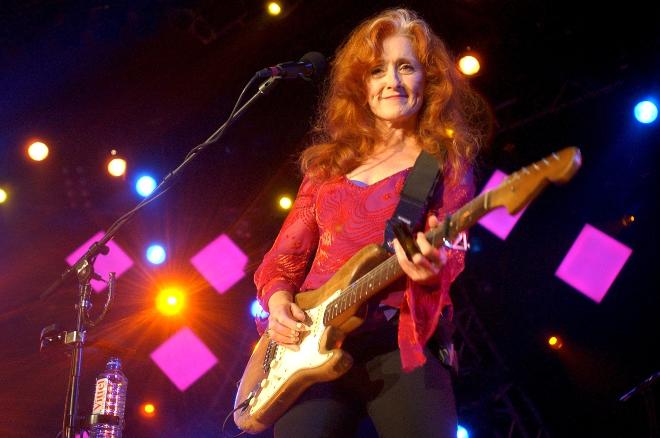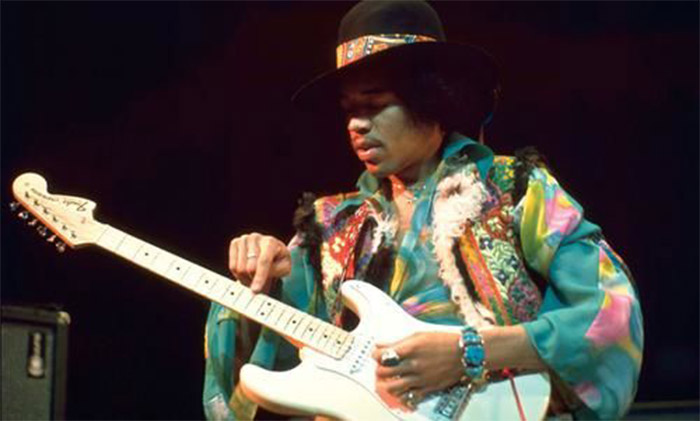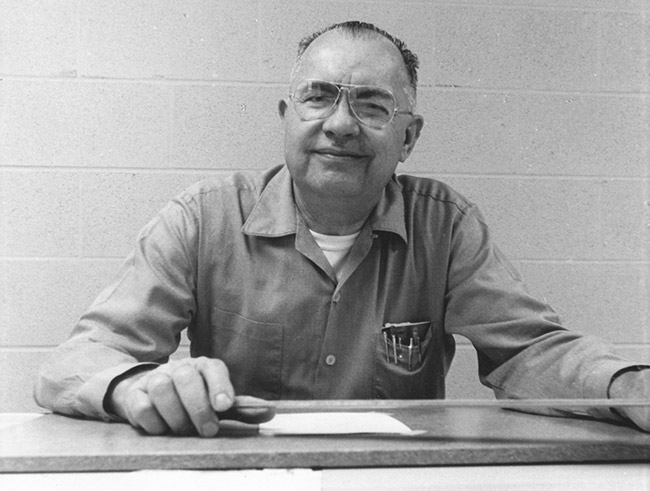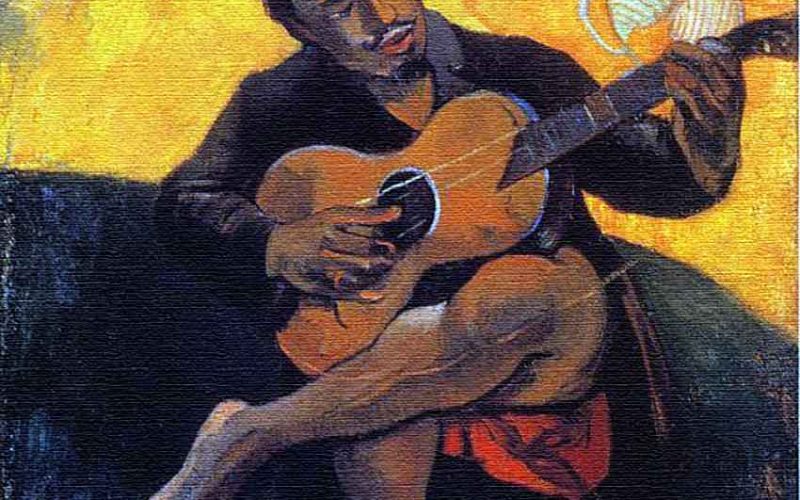Do you know what Eric Clapton, Jimi Hendrix, Steve Harris, Buddy Holly, John Lennon, John Mayer, Bonnie Raitt, and Sting have in common (besides rock and roll)?
They span three generations, from Buddy Holly (born 1936) to John Mayer (born 1977). They’re not all guitarists. Sting and Steve Harris (of Iron Maiden) play bass.
The answer: They all favor the legendary Fender instruments conceived by a late-blooming accountant named Clarence Leonidas “Leo” Fender (1909-1991)!
Leo Fender’s Early Life
Leo Fender was born in a barn not far from what would become Disneyland, California, on August 10, 1909. His parents grew oranges, melons, and vegetables and sold their goods from a truck.
From an early age, Leo loved tinkering. At 13, he visited his uncle’s auto shop in Santa Maria. He became mesmerized by a spare-parts radio his uncle had built and the loud music playing from it. His passion was born.
Yet when the Depression started, he declared an accounting major. After graduation, Leo joined Consolidated Ice and Cold Storage Company as a deliveryman and eventually became their bookkeeper.
In 1934, he married Esther Klotzly and moved to San Luis Obispo. He got an accounting job with the California Highway Department. But after six months, with the Depression at its height, he got laid off.
This happened a few more times before Leo borrowed $600 and headed home to open Fender Radio Shop in Fullerton.
Then World War II broke out. Factories stopped making radios to make weapons. Old parts were plentiful, however, and Leo’s business boomed.
Plus, music lifted everyone’s spirits. In the 1940s, war bond dances were popular. People would meet to sing, dance, and buy bonds to support the troops.
Leo gained a following in big band circles for building acoustic guitar amplifiers and public address systems.
Although Leo profited from the War, his success takes on poignancy when you know why he couldn’t be drafted. At age 8, he lost his right eye in a farm accident. Leo wore a glass one all his life.

They Call Him the “Henry Ford of Electric Guitar”
One day, a lap steel guitar player named “Doc” Kauffman wandered into Leo’s radio shop to have his amp repaired. Kauffman once worked for Rickenbacker Guitars and the two jawed about how to build a better electric guitar.
In 1944, Leo and Doc applied for a patent on a guitar pickup and formed a joint venture funded by a design for a record changer they sold for $5,000. But after a few tough years working from a shack behind Leo’s shop, Doc sold his share of the business and returned to his Oklahoma ranch.
Leo Fender kept innovating and soon dominated the industry. He didn’t invent the solid body electric guitar, but he improved it. He became the “Henry Ford of the electric guitar” by automating its manufacture.
According to Les Paul, another electric guitar pioneer,
Fender could look at something and immediately discern the simplest method of doing whatever had to be done. He was a good, honest guy who made a straightforward guitar.
Leo’s signature electric guitar had several incarnations, starting in 1950 (when he was 41). First, there was the Esquire, then the Broadcaster, then the Telecaster and finally, the iconic Stratocaster.
In August 1951, Leo started producing an electric bass. As bands got bigger and guitars got louder, upright bassists fought for volume on stage. Plus, the uprights were bulky and difficult to move.
Leo’s guitar-shaped Precision Bass and its amplifier solved those problems. Again, he didn’t invent the electric bass, but he was the first to make it widely available.
But it was the Stratocaster, introduced in 1954, that made Fender a household name.
It was the first guitar to feature three pickups and a spring tension vibrato system (that good old wah-wah-wah sound). It was also the first Fender with a contoured body.
But another tragedy clouded the Stratocaster’s success. Just a year before, as several employees repaired an amplifier, Leo stuck his head into the cabinet to check the wiring.
Someone flipped the switch and the speaker screeched into Leo’s ears, shattering his eardrums.
Leo lost most of his hearing, a devastating injury for a man who loved music and the musicians who played his creations. Later, advances in hearing aids would improve his situation.
Leo Fender was a workaholic and by 1964, he was ill and exhausted. Doctors diagnosed him with a severe staph infection. They said it was incurable. He decided to sell the company and wind up his affairs so his wife, Esther, wouldn’t have to deal with them.
CBS bought the Fender Electric Instrument Manufacturing Company for $13 million. Leo signed a ten-year noncompete agreement.
The Eternal Innovator
In 1974, with the aid of rest and strong antibiotics, Leo came out of retirement to head the Music Man Company. He was 65 years old!
In 1985, he formed G&L Musical Instruments with his friend George Fullerton.
In 1979, Esther passed away after a long battle with lung cancer, even though neither she nor Leo smoked. A year later he met Phyllis Dalton through George Fullerton and his wife. Phyllis was corporate vice-president twenty-five years his junior with three children from a previous marriage.
They married on September 20, 1980, on the Love Boat (the actual ship used in the TV show).
In her recent memoir, Phyllis reveals that Leo liked the way Elvis played his Fender guitar and bass, but not the way he shook his hips!
Leo also hated that Jimi Hendrix smashed his Stratocasters and set them on fire:
Those were his children and it pained him to see somebody beat it until it was smashed up completely, set fire to it, or just being horrible to it.

Leo made millions of dollars, yet remained a humble inventor. His coffee “mug” was a styrofoam cup with “Leo” printed on it. He brought his lunch to work every day because “With the money I save eating these sandwiches, I can buy a handful of resistors.” His employees loved him.
He showed up at G&L every day despite a diagnosis of Parkinson’s disease near age 75.
On March 21, 1991, Phyllis found him on the floor of his bedroom. He had gotten up for work but didn’t make it. He passed away from a massive heart attack at age 81.
G&L, Leo’s last company, still makes instruments in Leo’s beloved hometown of Fullerton. The current owners simply closed the door on Leo’s office and lab the day he died. The factory remains much how Leo designed it.
Phyllis currently serves as Honorary Chairman of G&L. She often volunteers at the Fullerton Museum, where she shares stories about her life with Leo.
Despite losing his eye, detouring into accounting, and enduring near-deafness, Leo Fender turned his teenage passion for tinkering into an empire. Almost every song seared into our hearts for three generations lives because of Leo, who finally found his groove in his 40s.
And he never learned how to play, or even tune, a guitar!
(If you enjoyed Leo’s story, check out Mamy Rock, who became a nightclub DJ in her 60s.)

Sources
- Phyllis Fender and Randall Bell. Leo Fender: The Quiet Giant Heard Around the World. Leadership Institute Press, 2017.
- Wired.com: This Day In Tech (8/10/2009)
- Opening Image: The Guitar Player by Paul Gauguin (1894)
